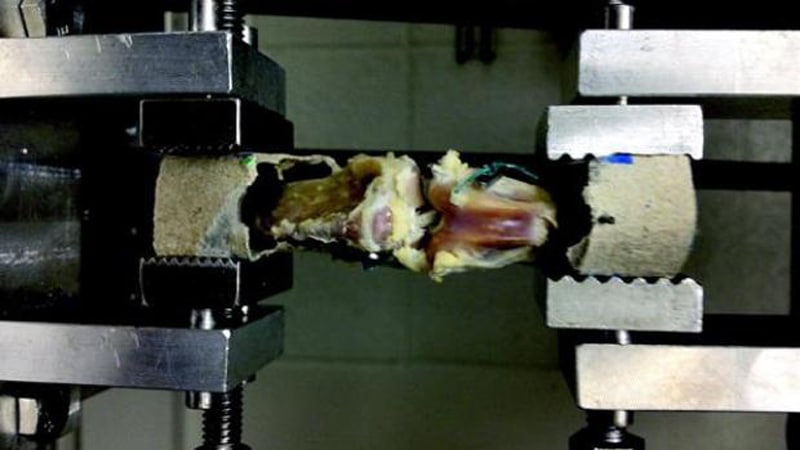Mayo Clinic‘s tissue engineering and biomaterials laboratory researchers in Rochester, MN have developed a 3D printed scaffold implant. This scaffold porous implant will facilitate bone regeneration in patients undergoing ACL (Anterior Cruciate Ligament) reconstruction.
Athletes often suffer from Anterior Cruciate Ligament injury, especially soccer, basketball, football players and gymnasts. Sudden jerks cause the ligament in the knee to stretch, causing immense pain and giving a feeling that the knee has popped out. Hence it is identified by the name ’pop’ in the knee.
The 3D printed scaffold developed by Mayo clinic researchers could be a big breakthrough in this respect, as medical experts are finding effective treatments measures for this problem. The Mayo clinic team’s findings are published in the journal Tissue Engineering, which states that their 3D printed porous scaffold implant slowly releases a human protein which speeds up the ligament injury process.
Joshua Alan Parry, MD; Sanjeev Kakar, MD; and coauthors from the Mayo Clinic, stated that the 3D printed scaffold implant releases a human bone-promoting protein over a period of time which leads to bone regeneration.
The 3D printed has a diameter of 3 mm, a length of 10 mm, and houses 300 μm pores. The researchers compared four different protein delivery options. Before testing the protein release options, the researchers created four different scaffold designs at 0%, 20%, 35% and 44% levels of porosity. The researchers settled for the rabbit ACL construction method, inferring that the ‘20% scaffold’ maintained the best levels of protein release.
Next, they tested the four delivery methods tested—microspheres only, microspheres + collagen, collagen only, and a saline solution only. The team settled for the microsphere scaffolds which had an additive effect, reducing gradually the initial burst release and cumulative release of rhBMP-2, and were most effective for bone regeneration.
The 3D printed scaffolds were designed using SolidWorks 3D CAD software and fabricated using a Viper si2 Stereolithography 3D printer from 3D Systems.
